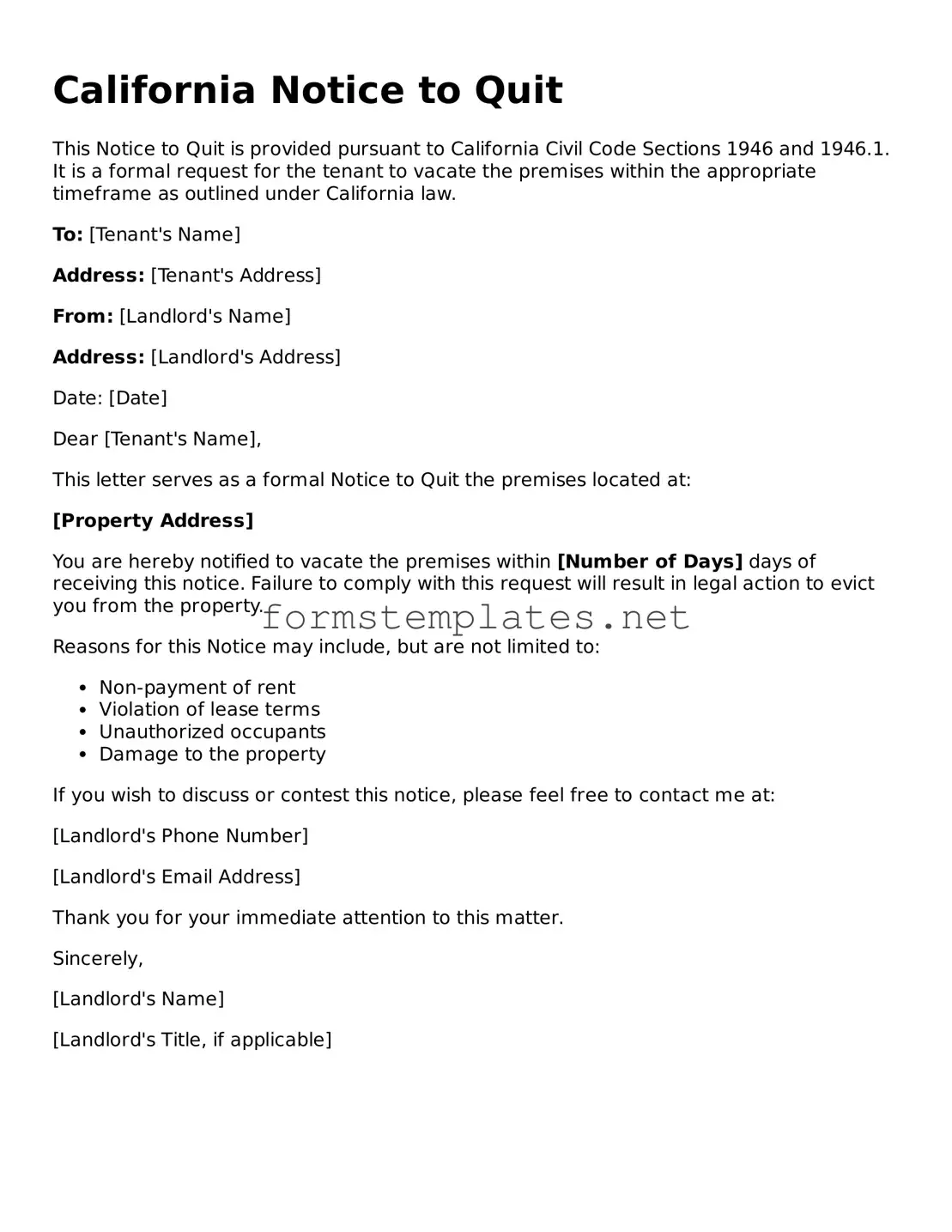California Notice to Quit
This Notice to Quit is provided pursuant to California Civil Code Sections 1946 and 1946.1. It is a formal request for the tenant to vacate the premises within the appropriate timeframe as outlined under California law.
To: [Tenant's Name]
Address: [Tenant's Address]
From: [Landlord's Name]
Address: [Landlord's Address]
Date: [Date]
Dear [Tenant's Name],
This letter serves as a formal Notice to Quit the premises located at:
[Property Address]
You are hereby notified to vacate the premises within [Number of Days] days of receiving this notice. Failure to comply with this request will result in legal action to evict you from the property.
Reasons for this Notice may include, but are not limited to:
- Non-payment of rent
- Violation of lease terms
- Unauthorized occupants
- Damage to the property
If you wish to discuss or contest this notice, please feel free to contact me at:
[Landlord's Phone Number]
[Landlord's Email Address]
Thank you for your immediate attention to this matter.
Sincerely,
[Landlord's Name]
[Landlord's Title, if applicable]
